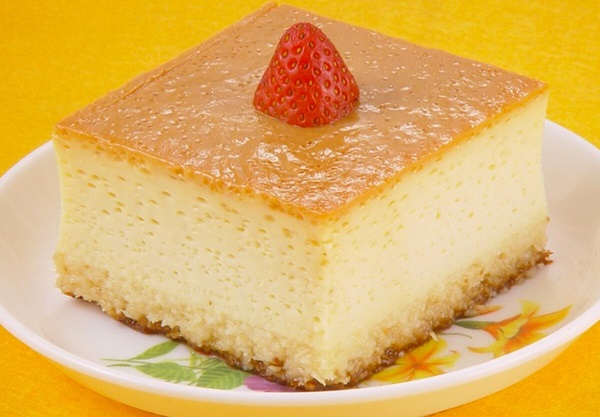Get your cake stand ready because August 23 is National Sponge Cake Day! This delicious dessert was made in the mid-16th century by an Italian pastry chef for a Spanish lord. Since then, sponge cake has become a favorite treat.
There are many variations of sponge cake, but one of the most popular is the Victoria sponge. Named after Queen Victoria, who reportedly enjoyed a slice with her afternoon tea, this cake features raspberry jam and whipped cream between two layers of sponge. No matter which variation you prefer, make sure to bake (or buy) yourself a cake and join the celebration!
History of Sponge Cake
Sponge cake’s origins can be traced back to the Renaissance period in Europe. It is believed to have been invented in Spain, with the first recorded sponge cake recipe appearing in an Italian cookbook in the early 16th century. The cake’s name is derived from its sponge-like texture, achieved through beaten eggs and minimal fat.
In the 18th century, sponge cake gained popularity in England. The Victorians, in particular, enjoyed this delicate cake, often serving it during afternoon tea. Over time, sponge cake spread to other parts of the world, each culture adding its unique twist to the classic recipe.
Variations of Sponge Cake Around the World
Spongecake’s simplicity makes it a perfect canvas for various adaptations. Here are some notable variations from around the globe:
Victoria Sponge (United Kingdom): Named after Queen Victoria, this British classic is filled with jam and whipped cream, and often dusted with powdered sugar.
Genoise (Italy): This Italian version incorporates melted butter into the batter, giving it a slightly richer flavor. It is often used as a base for elaborate layered cakes.
Castella (Japan): Introduced by Portuguese traders in the 16th century, Castella is a popular Japanese sponge cake made with sugar, flour, eggs, and starch syrup. It has a fine texture and is typically baked in a rectangular shape.
Angel Food Cake (United States): A sponge cake variation that uses only egg whites, resulting in an exceptionally light and fluffy texture. It is often served with fresh fruit and whipped cream.
Tres Leches Cake (Latin America): This sponge cake is soaked in three types of milk—evaporated milk, condensed milk, and heavy cream—creating a rich, moist dessert.

Tips for the Perfect Sponge Cake
Achieving the perfect sponge cake can be a bit tricky, but with these tips, you will be well on your way to baking success:
- Room Temperature Ingredients: Ensure that your eggs and butter (if using) are at room temperature before you start. This helps the ingredients incorporate more easily, resulting in a smoother batter.
- Proper Beating: Take the time to beat your eggs thoroughly. This step is crucial for incorporating enough air into the batter to create a light texture.
- Gentle Folding: When combining the beaten eggs with the dry ingredients, use a gentle folding motion. This helps preserve the air bubbles, which are essential for the cake’s rise.
- Baking Time: Keep a close eye on your cake as it bakes. Overbaking can result in a dry while undertaking can leave it dense and gummy. Use a skewer to check for doneness.
- Cooling: Allow the cake to cool completely before slicing. This helps the cake set properly and makes it easier to cut clean slices.
Conclusion
Sponge cake is a timeless dessert celebrated on August 23 as National Sponge Cake Day. With origins dating back to the mid-16th century, this cake has evolved into a global favorite, renowned for its light, airy texture. The Victoria sponge, named after Queen Victoria, is a beloved variation that showcases the versatility of sponge cake. From Italy’s rich Genoise to Japan’s fine-textured Castella, and the ultra-light Angel Food Cake in the United States, each culture has made its mark on this classic.
Baking the perfect sponge cake requires careful attention to detail. Using room temperature ingredients, properly beating eggs, gently folding the batter, and monitoring baking time are all crucial steps to achieve the desired texture. Whether you’re a seasoned baker or a novice, National Sponge Cake Day is the perfect excuse to enjoy this delightful treat and appreciate its rich history and variations from around the world.
Frequently Ask Question
What is National Sponge Cake Day?
National Sponge Cake Day is celebrated on August 23 each year. It is a day dedicated to enjoying and appreciating the delightful sponge cake, a dessert known for its light and airy texture.
When and where was sponge cake invented?
Sponge cake was invented in the mid-16th century by an Italian pastry chef for a Spanish lord. The first recorded sponge cake recipe appeared in an Italian cookbook in the early 16th century.
What is a Victoria sponge?
A Victoria sponge is a popular British variation of sponge cake named after Queen Victoria. It consists of two layers of sponge cake filled with raspberry jam and whipped cream, often dusted with powdered sugar.
How did sponge cake become popular in England?
Sponge cake gained popularity in England during the 18th century, particularly among the Victorians, who enjoyed serving it during afternoon tea.
Why is sponge cake called “sponge” cake?
The name “sponge cake” comes from its sponge-like texture, which is achieved through the use of beaten eggs and minimal fat.
How can I celebrate National Sponge Cake Day?
You can celebrate National Sponge Cake Day by baking or buying a sponge cake, trying different variations from around the world, and sharing this delicious dessert with friends and family.
You may also like to read, National Frozen Custard Day – August 8, 2024
